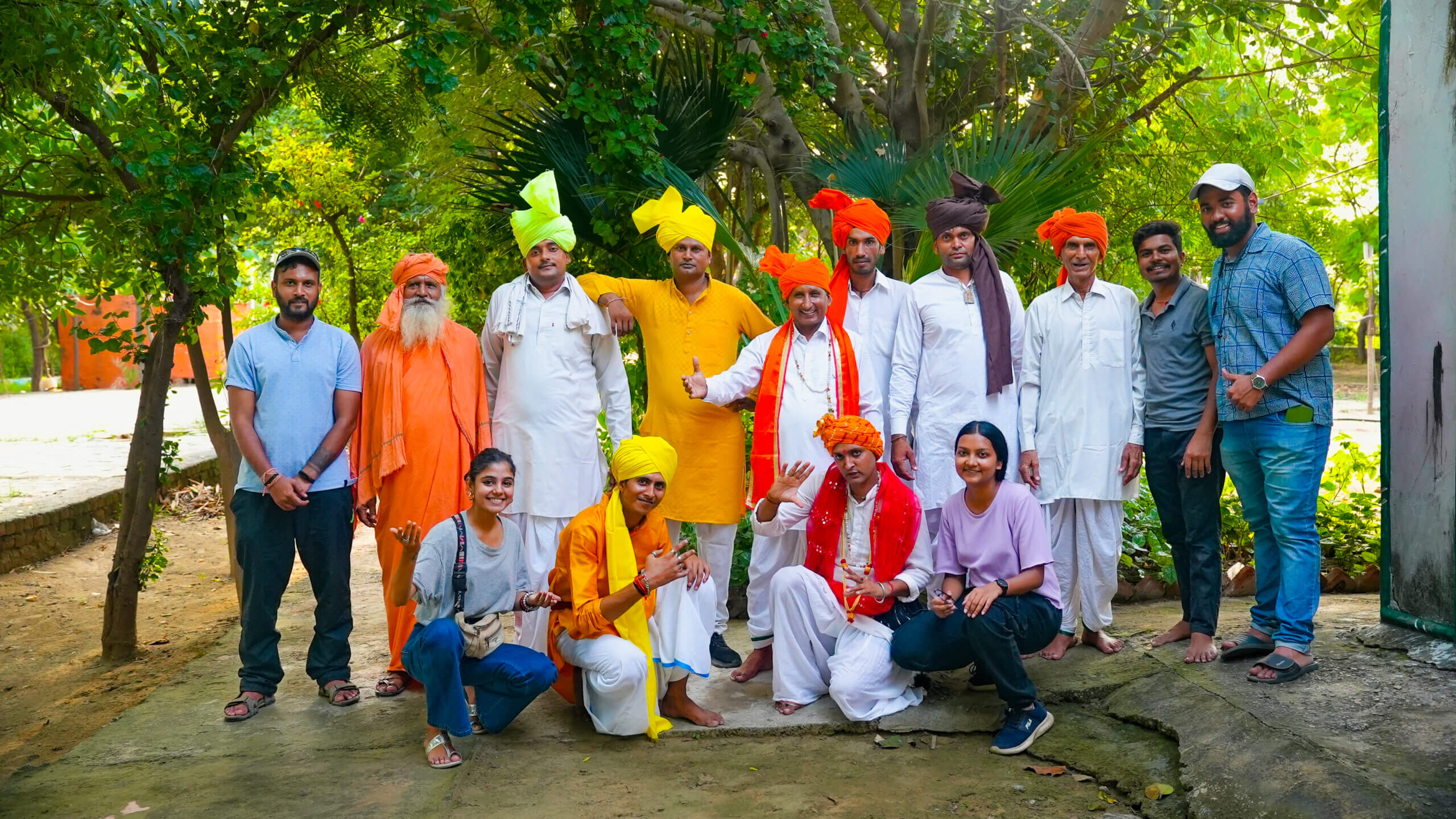
Preserving the Musical Legacy of Brij Nagara
Our initial knowledge of the Nagara was limited to its role as a musical instrument rather than recognizing it as an art form. The Nagara, also known as the Indian Drum about one to two feet in diameter, is a large single percussion instrument played with sticks. Crafted from a combination of wood and metal, it traditionally held a prominent position as the primary musical instrument in temple ceremonies and wedding celebrations. However, within the confines of the small village of Palwal, situated in the Banchari district of Haryana, something remarkable has transpired. The Sorot Jat community here has nurtured a unique musical tradition over generations, transforming the Nagara into an integral component of an art form known as Brij-Nagara.
Deriving its name from its central musical instrument, Brij-Nagara is an art form that weaves together ballads and anecdotes from the lives of Radha and Krishna in the sacred context of Barsana, Mathura, and Vrindavan. The term “Brij”(also spelt as Braj) or “Brijbhumi” holds a special place in the hearts of millions of Hindus worldwide. It is the sacred region where Lord Krishna, the divine lover and playful deity, embarked on his childhood adventures. Brij encompasses both sides of the Yamuna River, with its spiritual centre residing in Mathura-Vrindavan, Uttar Pradesh. However, its influence stretches into Haryana, including the towns of Palwal and Ballabhgarh.
Chandan Singh, a member of the Sorot Jat community from Palwal district, has dedicated his life to preserving and promoting the Brij Nagara tradition. He learned this art form from his Guru, Masterji Dharamlal and has been performing with his group for over 27 years. Unlike most of the groups that we saw in Haryana, where people are moving away from their tradition of pursuing folk music as a profession, Singh teaches singing, harmonium, jhanjh and nagara to the kids in his village so that they can carry forward this legacy. What sets Chandan Singh apart is his commitment to ensuring that the vibrant tunes of Brij-Nagara continue to resonate in the hearts of future generations.
The artists dressed as Brijwasis have been performing the melodious tunes of ‘Brij Ke Gaane’ in white, yellow, and orange kurta and turbans, emulating the attire of Lord Krishna’s era, creating a visual and auditory experience deeply rooted in tradition. Jhanjh or cymbals accompany the Nagara in Brij Nagara performances. These silver cymbals, used in pairs, add a unique layer to the music and are typically palm-sized or slightly larger. During the festive month of Holi, they are summoned to participate in larger gatherings, where a collective of approximately 5 to 7 Nagaras come together. This amalgamation of vibrant musical instruments, accompanied by splashes of colours, creates a visually captivating spectacle.
Chandan Singh and his group of Brijwasi have a simple yet profound wish to continue receiving love and appreciation from people for their talent. More importantly, they hope to inspire the younger generation to follow the same path and carry forward this musical legacy that is deeply intertwined with the culture and spirituality of the region.
– Hrisha Rashmi (Volunteer)
